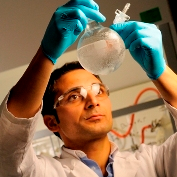Hydrogen Storage Materials
A special issue of Materials (ISSN 1996-1944). This special issue belongs to the section "Energy Materials".
Deadline for manuscript submissions: closed (31 March 2015) | Viewed by 77406
Special Issue Editor
Interests: boranes; boron- and nitrogen-based materials; chemical hydrogen storage; hydrolytic and thermolytic dehydrogenation; heterogeneous (metal) catalysis
Special Issues, Collections and Topics in MDPI journals
Special Issue Information
Dear Colleagues,
Over the past decade, the field of hydrogen storage has been significantly “energized” through the emergence of hydrogen storage materials. Under societal, economic and environmental pressure, scientists all over the world have shown dynamism, creativity and innovation and have “discovered” a large number of storage solutions, namely of hydrogen storage materials.
We all agree that one of the key issues hindering the development of a near-future hydrogen economy is hydrogen storage... We all agree that the efforts dedicated to address this issue are commensurate with its importance... Actually, we all agree on these because our common ultimate objective is to propose and develop viable solutions for many technological applications, from stationary to niche ones, via vehicular, mobile and portable.
In this context, the main focus of the forthcoming “hydrogen storage materials” special issue is to present a comprehensive overview of the new developments in the field. Recent advances in the science and technology of (i) the materials enabling physical adsorption of molecular hydrogen (i.e. sorbents for [cryo-]adsorption) and (ii) the materials for liquid-/solid-state chemical hydrogen storage (i.e. hydrides, amine-boranes, amides/imides, hydrocarbons/organic heterocycles, hydrous hydrazine, etc.) will be addressed.
It is my pleasure to invite you to submit a manuscript for this special issue. Full papers, communications, and reviews are all welcome.
Umit B. DEMIRCI
Guest Editor
Manuscript Submission Information
Manuscripts should be submitted online at www.mdpi.com by registering and logging in to this website. Once you are registered, click here to go to the submission form. Manuscripts can be submitted until the deadline. All submissions that pass pre-check are peer-reviewed. Accepted papers will be published continuously in the journal (as soon as accepted) and will be listed together on the special issue website. Research articles, review articles as well as short communications are invited. For planned papers, a title and short abstract (about 100 words) can be sent to the Editorial Office for announcement on this website.
Submitted manuscripts should not have been published previously, nor be under consideration for publication elsewhere (except conference proceedings papers). All manuscripts are thoroughly refereed through a single-blind peer-review process. A guide for authors and other relevant information for submission of manuscripts is available on the Instructions for Authors page. Materials is an international peer-reviewed open access semimonthly journal published by MDPI.
Please visit the Instructions for Authors page before submitting a manuscript. The Article Processing Charge (APC) for publication in this open access journal is 2600 CHF (Swiss Francs). Submitted papers should be well formatted and use good English. Authors may use MDPI's English editing service prior to publication or during author revisions.
Keywords
- hydrogen storage material
- physical storage
- sorbent for cryo-adsorption
- chemical storage
- amide/imide
- borane
- hydrous hydrazine
- hydride
- hydrogen carrier
- organic heterocycles






